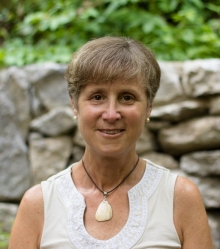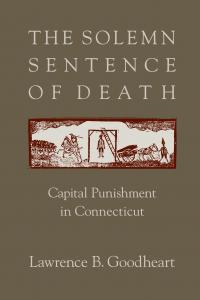Bob Ostertag wrote his recent book, Sex Science Self: A Social History of Estrogen, Testosterone, and Identity, in the belief that if more people at least knew the long, bizarre, and often funny history of the debates about sex hormones, we might be able to proceed
with less animosity between us and better odds that the  medical choices we make will bring happiness. The details recounted below about the controversies surrounding the Pill in the 1960s and 1970s as well as the treatment of hysteria by surgically removing ovaries a hundred years before are from his book.
medical choices we make will bring happiness. The details recounted below about the controversies surrounding the Pill in the 1960s and 1970s as well as the treatment of hysteria by surgically removing ovaries a hundred years before are from his book.
Once Again Sex Hormones are Making People Angry
Once again the so-called sex hormones (estrogen and testosterone) are proving their astounding power to make human beings angry, declare truths about their selves, and even proclaim their faith in God.
The “sex hormones” in this case are the synthetic estrogen and progestin found in contraceptive pills. Researchers at the University of Copenhagen studied the health records of Danish women aged between 15 and 34 and found that those on the estrogen-progestin pill were 23% more likely to be prescribed an antidepressant by their doctor, mostly within six months of starting on the pill. For those on the progestin-only pill, the figure rose to 34%. It increased even further, to 80% more likely, for girls aged between 15 and 19 on the combined pill.
Why should this make anyone angry?
Holly Grigg-Spall, author of the 2013 book Sweetening the Pill: or How We Got Hooked on Hormonal Birth Control, explained:
Having spent the past eight years researching and writing on the emotional and psychological side-effects of hormonal birth control, I initially felt elated to read this study. Not just for myself, but for the hundreds of women I’ve interviewed over the years. . . . Finally, here was the kind of large-scale, long-term study I’d been told was necessary before we could seriously talk about this issue or make a change in how we prescribe hormonal contraceptives. However, I was naive, because it seems that no study will ever be good enough for the medical community to take women’s experiences seriously. As soon as this research dropped, the experts lined up to deliver their usual mix of gaslighting and paternalistic platitudes. We’re told not to be alarmed, concerned, or deterred from continuing to use our hormonal contraceptives, mostly by men who have never and will never take them themselves. . . . This “pillsplaining” . . . is nothing short of sexism.
Examples of “pillsplaining” abound in the media coverage of the Danish study. Dr. Ali Kubba, for example, is widely cited offering a boilerplate explanation of the basics of the study design, noting that the study shows only a correlation between depression diagnosis and use of the Pill, and does not show that use of the Pill actually causes depression. Dr. Kubba then concludes, “Women should not be alarmed by this study.” Dr. Channa Jayasena likewise appears in many articles explaining the same point about proving correlation but not causation, then concludes that “women should not be deterred from taking the pill.”
However, no scientific study, whether designed to show correlation or causation, instructs us how we should feel about the study’s results, whether happy, sad, indifferent, or alarmed. What if some women decide that even though no causal relationship between contraceptive pills and depression has been demonstrated, they would rather ask their male sexual partners to use condoms rather than worry about going on antidepressants? This response would be just as rational as remaining “undeterred” in taking the drug.
It is noteworthy that both Kubba and Jayasena are men, telling women how to behave, and dressing up their instructions with a phony air of science. It is likewise noteworthy that both doctors present continued use of contraceptive pills as the only reasonable reaction to the study—which means undiminished profits for the manufacturers. Dr. Kubba, in declarations he has made for conflict-of-interest protocols, has admitted that he “speaks at national and international meetings sponsored by pharmaceutical companies and receives honoraria and travel expenses.”
Holly Grigg-Spall is not the only one who is angry about this. So is Lara Prendergast. The title of her article in The Spectator asks, “The Pill has been linked to depression. Why isn’t this more of a scandal?” The subtitle answers, “Because it is a sin to suggest that oral contraceptives may not be the greatest gift ever given to womankind.”
The conservative American Spectator featured a piece by the right-wing columnist Melissa Clouthier titled “Why the Medical Profession Ignores Negative Pill Research.”
Even God was invoked. Brianna Heldt, writing in the National Catholic Register, declared that the Danish study underlines “why it is so very crucial for Catholics to first believe, then live and tell the truth about the dignity of the human person.”
But wait. Grigg-Spall’s book was resoundingly criticized by other feminist writers who declared it “sexist and dangerous” and “part of a disturbing effort to reduce women to their biological functions in the name of feminism.” In their view, the Grigg-Spalls of feminism irrationally seek to deny women access to drugs that do have negative side effects but that are genuinely needed for everything from contraception to menopause.
The bitterness that colors this debate comes when research and debate about estrogen becomes a debate about who is and is not a woman; who is “really female.” Grigg-Spall asks, “If we shut down the essential biological center of femaleness, the primary sexual characteristics, then can we say that women on the pill are still ‘female’?” If that is so, Lindsay Beyerstein replies in Slate, “postmenopausal women, pregnant women, girls, ovarian cancer survivors, and transwomen aren’t really female.”
Who is “really female”—women on the pill, which interferes with their bodies’ normal estrogen production? Preadolescent girls, whose bodies have yet to produce adult levels of estrogen? Postmenopausal women, whose bodies produce less estrogen? People born male taking prescription estrogen their bodies did not produce? Those whose ovaries have been surgically removed? These are disagreements over who people “really are,” so they quickly escalate to anger. But all sides agree that, somehow or other, estrogen is what makes women women.
Very few people are aware of the long history of this dispute. In the 1950s, Dr. William H. Masters, the tireless evangelist of “hormone replacement therapy” (HRT), sold American women on the idea of taking estrogen for their entire postmenopausal lives by claiming that without the prescription they would fall out of womanhood into “the third sex” or “the neutral gender.”
In 1969, Barbara Seaman wrote a best-selling book documenting extensive anecdotal evidence of the Pill’s negative effects, most prominently depression. Seaman argued that many doctors were aware of these dangers but did not share this information with their patients, patronizingly assuming that only (male) doctors and not (female) patients could rationally think through the troubling details of their drug regimens. The book led to Senate hearings on the safety of the Pill, which were disrupted by members of D.C. Women’s Liberation, protesting that none of the Senate hearing’s witnesses were women so how would they know what it was like to take the Pill? The book, the hearings, and the protest by a new generation of militant women became an iconic moment for the feminist movement of the 1970s.
One hundred years earlier, doctors claimed to have found a correlation between ovarian cycles and “hysteria.” We no longer recognize hysteria as a disease, but surely some of what was diagnosed as hysteria in the nineteenth century would be diagnosed today as depression. So doctors began to treat hysteria by surgically removing ovaries. Up to 100,000 women lost their ovaries in this fashion. Bitter controversy ensued. To supporters, the operations were “one of the unequalled triumphs of surgery,” while those who wanted to prevent women who demanded them from receiving them were “wanting in humanity” and “guilty of criminal neglect of patients.” Critics of the procedure were just as adamant, casting the surgeons who performed the operations as “gynaecological perverts.” (Present-day wisdom holds that surgical removal of the ovaries, far from curing “hysteria,” causes surgically induced menopause which can result in dangerous depression.)
More research was called for after Seaman’s book was published, and more was done. We can now review a half century of studies on oral contraceptives and depression. The result? Some associate oral contraceptives with higher rates of depression, some show lower rates, and some show mostly less depression but more in certain subgroups.
The effects of estrogen, whether from prescription drugs or synthetic chemicals in the environment, have proven maddeningly difficult to pin down. Take the new Danish study, for example. The study shows that teenage girls who use contraceptive pills also get diagnosed with depression more than teenage girls who are not on the Pill. And in a way, this fits with many other studies that have shown that estrogen exposure can have a very different impact on females depending on the time of the exposure (prenatal, very young, adolescent, adult, menopausal, and postmenopausal). Adolescence seems to be a time when exogenous hormones have an especially strong effect. However, teenage girls on the pill may also be having sex for the first time, falling in love for this first time, breaking up for the first time, etc. Feelings of ambivalence, disappointment, and guilt are common to these situations and are feelings for which antidepressants are prescribed. Beyond all that, who can say if the only correlation the study found is that teenage girls who feel comfortable talking to their doctor about sex also feel more comfortable than other girls talking to their doctors about feelings of depression? Or if a teenage girl taking a pill a day for contraception is more open to the idea of taking another one for depression than a girl who is taking no pills and has never talked with her doctor about her feelings or her sexual behavior?
The BBC concluded its report on the new study by noting that despite all the controversy, “two points at least are uncontroversial: anyone concerned about symptoms of depression should seek help—and more research would be very welcome.”
But we have years of studies showing a correlation of oral contraceptives and depression, no correlation, and a partial correlation. Those who already agree with one position or another take heart when a new study seems to corroborate their position and are incensed when a new study challenges them.
Aside from giving us all another opportunity to yell at each other, what would more research accomplish?
New research that could prove or disprove a causal relationship between oral contraceptives and depression would move things forward, but no one has an idea of how to do this in a complex world in which there is no universally agreed upon measure of what precisely constitutes “depression” and when it should be treated, and in which women do not shut themselves in isolation chambers and do nothing other than take pills. In the real world where people have sex, fall in love, break up, have poorly understood and unmeasurable risk factors for depression, are exposed to all kinds of chemicals and estrogens in their environment, and read articles and books and warnings and promotions concerning contraception, no one knows how to design a study that would prove a causal link.
In the meantime, we get angry, we declare who we are and who others are, we talk about God, receive contradictory advice about what prescription drugs to take, and continue to take them in ever-increasing quantities.
—–
 Author Bob Ostertag will discuss his new book, Sex Science Self: A Social History of Estrogen, Testosterone and Identity (2016), in conversation with Trystan Cotten, an associate professor of gender studies at California State University, Stanislaus.
Author Bob Ostertag will discuss his new book, Sex Science Self: A Social History of Estrogen, Testosterone and Identity (2016), in conversation with Trystan Cotten, an associate professor of gender studies at California State University, Stanislaus.
Thursday, October 20
7pm-9pm
The GLBT History Museum
4127 18th St., San Francisco
$5, free for members
Facebook invite here
 Newly positioned as front lines in the War on Terror, airports became battlegrounds for contestations over the meanings of citizenship, mobility, freedom, and privacy, all articulated against a matrix of security. In the process, security became a function of visibility, as screening procedures were refined and devised to maximize the exposure of travelers passing through. Travelers were required to acculturate themselves to longer security lines, restrictions on what they could pack, and more intimate and invasive screening procedures. The controversy these new measures engendered often framed them as examples of state overreach (embodied in the probing hands of TSA screeners) and so rested on the notion that U.S. citizens deserved more respectful treatment.
Newly positioned as front lines in the War on Terror, airports became battlegrounds for contestations over the meanings of citizenship, mobility, freedom, and privacy, all articulated against a matrix of security. In the process, security became a function of visibility, as screening procedures were refined and devised to maximize the exposure of travelers passing through. Travelers were required to acculturate themselves to longer security lines, restrictions on what they could pack, and more intimate and invasive screening procedures. The controversy these new measures engendered often framed them as examples of state overreach (embodied in the probing hands of TSA screeners) and so rested on the notion that U.S. citizens deserved more respectful treatment. Rebecca A. Adelman is the author of Beyond the Checkpoint: Visual Practices in America’s Global War on Terror (University of Massachusetts Press, 2014).
Rebecca A. Adelman is the author of Beyond the Checkpoint: Visual Practices in America’s Global War on Terror (University of Massachusetts Press, 2014). The city of Boston and the commonwealth as a whole have long been recognized as immigrant- and refugee-friendly places. As chronicled in my book,
The city of Boston and the commonwealth as a whole have long been recognized as immigrant- and refugee-friendly places. As chronicled in my book,  Marilynn S. Johnson is author of
Marilynn S. Johnson is author of  In the 1920s and 1930s Boston became a rich and distinctive site of African American artistic production, unfolding at the same time as the Harlem Renaissance. Lorraine Elena Roses employs archival sources and personal interviews to recover this artistic output.
In the 1920s and 1930s Boston became a rich and distinctive site of African American artistic production, unfolding at the same time as the Harlem Renaissance. Lorraine Elena Roses employs archival sources and personal interviews to recover this artistic output. nomy of racial difference and thus defined a uniform African American identity in Harlem. Soto explores how black writers and intellectuals during the same period described a far more complex community of interracial social contact and intra-racial diversity.
nomy of racial difference and thus defined a uniform African American identity in Harlem. Soto explores how black writers and intellectuals during the same period described a far more complex community of interracial social contact and intra-racial diversity.


 medical choices we make will bring happiness. The details recounted below about the controversies surrounding the Pill in the 1960s and 1970s as well as the treatment of hysteria by surgically removing ovaries a hundred years before are from his book.
medical choices we make will bring happiness. The details recounted below about the controversies surrounding the Pill in the 1960s and 1970s as well as the treatment of hysteria by surgically removing ovaries a hundred years before are from his book. Author Bob Ostertag will discuss his new book,
Author Bob Ostertag will discuss his new book,  In
In  Rebekkah Rubin is a graduate student in the history department at UMass Amherst. She is specializing in public history.
Rebekkah Rubin is a graduate student in the history department at UMass Amherst. She is specializing in public history.  Print is dying, but it pays the bills. Many if not most readers have shifted to online, yet digital ads bring in pennies compared to the dollars earned by their print counterparts. It’s an existential crisis, and it’s one that I explored several years ago in my book
Print is dying, but it pays the bills. Many if not most readers have shifted to online, yet digital ads bring in pennies compared to the dollars earned by their print counterparts. It’s an existential crisis, and it’s one that I explored several years ago in my book  Dan Kennedy is an associate professor of journalism at Northeastern University and a panelist on
Dan Kennedy is an associate professor of journalism at Northeastern University and a panelist on  zer Parkman, a man showed up at Ensign John Maynard’s tavern in Westborough, Massachusetts, who attracted considerable attention. On Tuesday, 14 August 1739, Parkman had spent much of that day supervising the plowing and mowing of his fields. That evening he attended a “Puppett show at Ensign Maynards.” No doubt Parkman, his neighbors, and the entire Westborough parish were delighted by this unusual turn of events. Probably the first puppets ever seen in this rural Massachusetts town, they may have been the only ones circulating in North America during the 1730s. Before the puppeteer left the town on Friday morning, he stopped at Parkman’s home: “Mr. Edward Burley Son came to my House in his Cabbin with his Puppetts, etc. there in. N.B. I had my Self Seen them in some measure my self Yesterday just at Evening.”
zer Parkman, a man showed up at Ensign John Maynard’s tavern in Westborough, Massachusetts, who attracted considerable attention. On Tuesday, 14 August 1739, Parkman had spent much of that day supervising the plowing and mowing of his fields. That evening he attended a “Puppett show at Ensign Maynards.” No doubt Parkman, his neighbors, and the entire Westborough parish were delighted by this unusual turn of events. Probably the first puppets ever seen in this rural Massachusetts town, they may have been the only ones circulating in North America during the 1730s. Before the puppeteer left the town on Friday morning, he stopped at Parkman’s home: “Mr. Edward Burley Son came to my House in his Cabbin with his Puppetts, etc. there in. N.B. I had my Self Seen them in some measure my self Yesterday just at Evening.”

 A veteran journalist, Christopher B. Daly teaches journalism and history at Boston University. He is coauthor of Like a Family: The Making of a Southern Cotton Mill World, which won the Albert J. Beveridge Award of the American Historical Association and the Merle Curti Award of the Organization of American Historians. He is the author of
A veteran journalist, Christopher B. Daly teaches journalism and history at Boston University. He is coauthor of Like a Family: The Making of a Southern Cotton Mill World, which won the Albert J. Beveridge Award of the American Historical Association and the Merle Curti Award of the Organization of American Historians. He is the author of  electrocution in 1960, and Michael Ross, by lethal injection in 2005. In this Kafkaesque situation no one was executed unless they wanted to be. The contradiction was blatant and absurd.
electrocution in 1960, and Michael Ross, by lethal injection in 2005. In this Kafkaesque situation no one was executed unless they wanted to be. The contradiction was blatant and absurd.